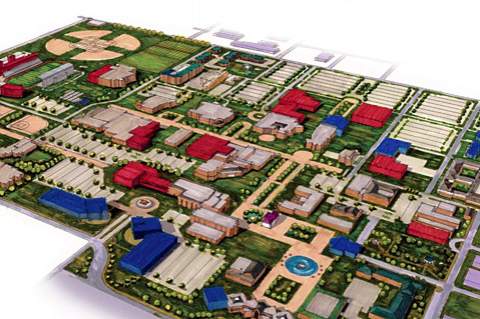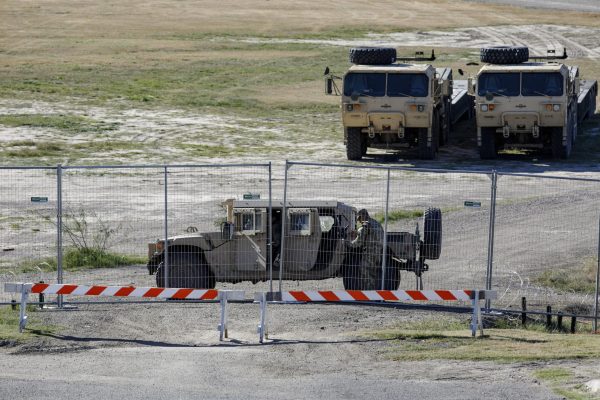Forum reveals five-year construction plan

At the public forum on May 20, Broaddus Planning presented a campus development plan for the next five years.
May 21, 2014
At the public forum on May 20, Broaddus Planning presented a campus development plan for the next five years.
“We are growing rapidly as many of you know here on campus,” Vice President for Finance and Administration Tye Minckler said. “We have a lot of projects including housing, which we are behind on more than anything, parking and academic buildings. In order to get all of those things here with our limited land we need to plan carefully.”
This was open to allow the staff and faculty to bring ideas, thoughts and concerns to incorporate in the planning process as the company moves forward.
The presentation began with the five phases of the plan: initiation, analysis, vision, development and implementation plan.
“We kicked off the project with initiation phase and will move through,” president of Broaddus Planning Stephen Coulston said. “We are in the analysis phase of the project right now. We have gathered a lot of information and kind of drinking from a fire hose getting up to speed and starting to crunch and figure out what this data means to us. Then we will be preparing big ideas like content and vision that will serve as the basis for development and refinement of the plan, ultimately for projects that may help shape the physical environment here at Tarleton over the next several years, certainly over the next five years.”
The presentation continued with identifying the key drivers to help prioritize the five-year development planning strategy and update the current master plan.
“The key drivers are the things we are hearing in the campus community that we should really be focusing on for this project,” project manager and lead planner Andrew Broderick said. “We are campus planners. We do this type of work across the state and country as well. We have the excellent opportunity at the beginning of each project to really learn what makes each campus unique, what are the hallmarks of this place here at Tarleton or wherever we are working, and how we make that stronger. That’s what we are starting to do in the analysis phase and the key drivers are organized systematically in six different areas. They are all based on physically space issues.”
The first key driver is academic space. The ag and engineering building is the at the top of the list because the building will likely house an engineering program in the future. Other buildings on the list include the Joe W. Autry agriculture building, college of business and more space for the kinesiology program.
“No decisions have been made definitely yet we are just starting to make a list of academic spaces that may need new construction, renovations or demolition,” Broderick said.
The second key driver is student housing. The plan is to add 2,000 beds by the year 2020.
“There is a commitment to this university of retaining its status as a residential campus and that will continue to be the case in the future as well,” Broderick said. “Heritage hall which will be in operation in the fall will provide 500 beds, so if you could picture roughly four more of those that would be the impact we are looking to have.”
The next key driver on the list is athletic recreation and student life. The new projects for the five year horizon include memorial stadium expansion which will have a new grand stand, press box and increasing the seating to 10,000. Other projects include an aquatic center, dining hall expansion or second location for a dining hall and an art gallery addition on campus.
One of the more important key drivers is parking. Some of the ideas they presented included adding parking garages, remote/commuter parking, demand reduction such as a shuttle and freshman no-car rule.
“We are not making these recommendations to the campus right now, we are just throwing these out here as potential solutions to consider to how this campus wants to grow in the future.”
The building upon campus landscape is another key driver in the planning process. The ideas include adding pedestrian walkways, adding green space and the realignment on Washington Street where “the curve” is near the Bender residence hall.
“A detail that stuck out to me was the stone walls and gates around campus. They are beautiful. You know you’re at Tarleton State University when you see these things and they are unique qualities that can be more emphasized in the future.”
The last key driver is the infrastructure of the campus. This includes what different buildings on campus currently provide and what needs to be expanded.
A physical analysis of the campus was then presented. Discussion was made on which buildings will be demolished including Ferguson, Bender, Moody and Gough residential halls. Another focal point was the area of the campus and the distance between the buildings. The academic buildings are at certain proximity of each other that students are able to get to each build within five minutes.
Some of the concerns the faculty and staff presented were a separate building for the data center, the concern of the Horticulture Center being demolished, small departments being thrown to the curve, height of the new buildings and renovating the Barry B. Thompson Student Center.
Another concern was a track being built over two of the four intramural athletic fields.
In addition the question about building an event center to hold commencement was addressed, but this will not be completed until after the five-year plan.
Another forum is expected to take place in July to provide a vision symposium of updated information about the plan.
“We are not sure exactly what the path is that we will be taking,” Coulston said. “There are a lot of different options. That is why we want to meet with the community from the campus and off-campus community. “




